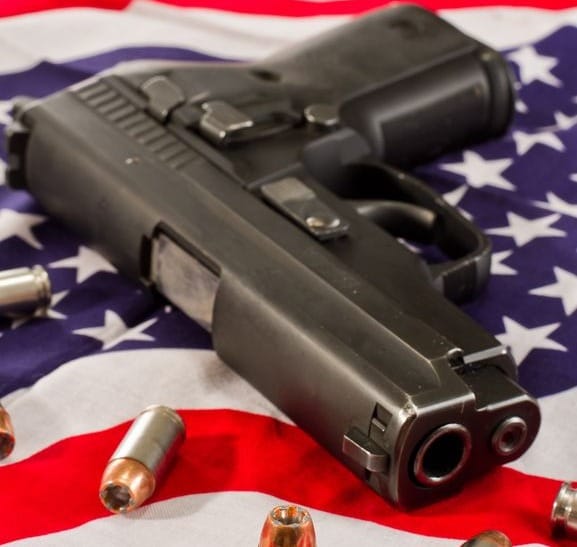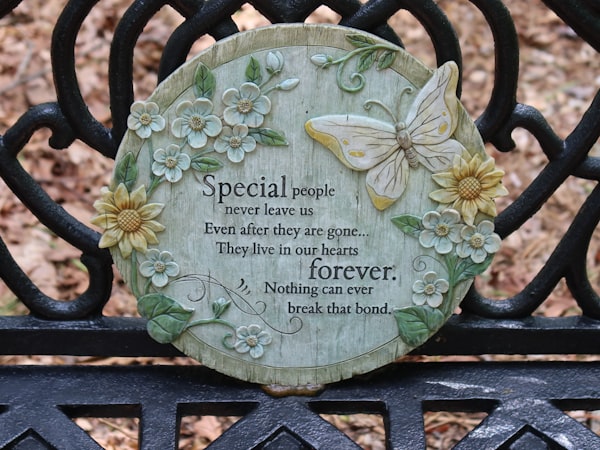How to Take Guns Away from Someone with Dementia: A Medical Concern
Removing firearms from someone with dementia is a crucial safety concern. Cognitive decline can lead to impaired judgment and increased risks. Learn legal, medical, and compassionate approaches to ensure safety while respecting the individual’s dignity.

Betsy writes,
My husband has been diagnosed with dementia. We are moving into the middle stages of dementia. My husband has always owned guns.
My concern is that my husband, Duane, is starting to have some very challenging behaviors. There are times when he is lucid and aware of his surroundings. Then, there are times when he becomes irrational. To be honest, there are times when his behaviors are frightening.
Duane has recently become obsessed with his guns. We have a gun safe where most of the guns are stored. However, Duane also has displayed guns in his study.
Betsy,
Your concerns are valid and important to address. Managing firearm safety in a household with someone living with dementia, especially as the disease progresses, is a critical topic.
Thank you for sharing your situation. The challenges you’re facing as your husband, Duane, progresses into the middle stages of dementia are significant, and it’s clear that you are prioritizing his safety and well-being, as well as your own.
Given Duane’s increasing interest in his firearms and the behavioral changes you’ve described, your concerns are well-founded.
Warm Regards,
Diane Carbo RN
Understanding the Risks of Gun Ownership
As dementia progresses, changes in reasoning, memory, and behavior can lead to unpredictable and potentially dangerous situations. These changes can include aggression, paranoia, or delusions, which might increase the risk associated with firearm access. Even if Duane has moments of lucidity, his ability to consistently make safe, logical decisions may no longer be reliable.
Moreover, studies show that older adults, particularly those with cognitive decline, are at a higher risk of both accidental and intentional firearm injuries. It’s not just about self-harm or harming others; sometimes, the presence of a gun can escalate a situation that might otherwise be manageable. This can lead to incidents of gun violence, highlighting the importance of safe management and storage of firearms in households with individuals experiencing cognitive impairments.
Practical Steps for Firearm Safety
To create a safer environment while respecting Duane’s history and attachment to his firearms, consider the following steps:
- Secure All Firearms: While you mentioned having a gun safe, it’s crucial to ensure that all firearms—displayed or stored—are completely inaccessible to Duane. Use a high-security lock or remove the keys and combination from his knowledge. Ensure that all guns are unloaded to prevent any accidental discharges.
- Remove Ammunition: Separating guns from ammunition can further reduce the risk. Storing ammunition in a separate, locked location may help ease your concerns while addressing safety. Ensure that ammunition is stored separately from the firearms.
- Consider Firearm Removal: If Duane’s obsession with his firearms persists, you might consider temporarily or permanently removing the firearms from the home. Discuss this decision with trusted family members or law enforcement, who may offer voluntary firearm storage options. Local law enforcement can assist in the safe transfer or storage of firearms.
- Extreme Risk Protection Orders: Consider the use of extreme risk protection orders (ERPOs) as a legal mechanism to temporarily remove firearms from individuals who may pose a threat to themselves or others. ERPOs can be petitioned by family members or law enforcement and typically last for two weeks, with the possibility of extension up to one year.
- Involve a Healthcare Professional: Reach out to Duane’s healthcare team to discuss your concerns. They can help you navigate the conversation about firearm safety and may provide resources or support.
- Communicate with Compassion: If Duane becomes upset about firearm restrictions, frame the conversation around protecting him and others, emphasizing your shared commitment to safety and well-being.
Addressing the Issue: Policy and Intervention
Addressing the issue of firearm access in older adults with dementia requires a comprehensive approach that involves both policy and intervention. One potential solution is the implementation of “red flag laws.” These laws allow family members and law enforcement to petition a judge for the temporary removal of firearms from someone deemed to be a danger to themselves or others. This legal framework can empower families and caregivers to take proactive steps when they suspect that a loved one with dementia may pose a risk.
In addition to policy changes, healthcare providers play a crucial role in addressing firearm access in older adults with dementia. Physicians can use the “5 Ls”—Look, Listen, Learn, Link, and Limit—to frame conversations with family members about the potential risks associated with gun ownership and dementia. These discussions can help families develop a plan for transferring ownership of firearms and ensuring that the individual with dementia does not have access to them. By working together, families, healthcare providers, and policymakers can create a safer environment for everyone involved.
The Role of Law Enforcement Agencies
Law enforcement agencies can play a critical role in addressing the issue of firearm access in older adults with dementia. In situations where there is a potential threat, law enforcement agencies may be able to temporarily store guns, providing a safe solution while the family navigates the complexities of dementia care. Additionally, law enforcement agencies can offer guidance and support to families and caregivers, helping them understand the legal and safety implications of firearm access.
However, law enforcement agencies may also face challenges in addressing this issue. They might be uncertain about their ability to store and return firearms or concerned about liability issues. To overcome these challenges, it is essential to develop clear policies and procedures for law enforcement agencies to follow when dealing with firearm access in older adults with dementia. By establishing these guidelines, law enforcement can effectively support families and contribute to a safer community.
Managing Firearms in the Home
Managing firearms in the home can be a challenging task, especially when there is a loved one with dementia present. One option is to lock all the firearms in a gun safe and store the ammunition separately. Ensuring that guns are unloaded and ammunition is stored separately can significantly reduce the risk of accidents. However, even with these precautions, having guns in the house can still pose a risk.
Another option is to remove the firearms from the home altogether. This can be complicated in some states due to strict rules about transferring gun ownership. To navigate these challenges, families can consider setting up a gun trust, which specifies terms for holding, using, and transferring firearms. This legal arrangement can help ensure that firearms are managed safely and responsibly.
Developing a comprehensive plan that takes into account the individual’s cognitive and behavioral abilities is crucial. This plan should include measures such as using trigger locks, regularly reassessing the individual’s condition, and involving trusted family members in the decision-making process. By taking these steps, families can create a safer environment and reduce the risks associated with firearm access in the home.
Why Healthcare Professionals Ask About Guns
Healthcare professionals often ask about firearm ownership in households with dementia patients because their goal is to ensure safety. While these questions may feel invasive, they are rooted in concerns about the risks that firearms can pose as cognitive decline progresses. Individuals with mild cognitive impairment are just as likely to have firearms in their homes as those with more severe forms of dementia, indicating a potential concern for safety and mental health. Understanding this perspective can help you approach this sensitive issue with more confidence and support.
Resources for Support for Family Members
You are not alone in facing these challenges. Organizations like the Alzheimer's Association and local caregiver support groups can provide guidance and a listening ear. Additionally, consider exploring educational resources about managing safety concerns in dementia care.
Final Thoughts
Your proactive approach to this sensitive issue shows your dedication to Duane's safety and dignity. Balancing his autonomy and interests with the need to protect him and others is challenging, but taking these steps can help create a safer and more secure environment for everyone.
If you'd like further assistance or resources tailored to your situation, don't hesitate to reach out. You're doing an incredible job managing a difficult and emotionally taxing situation.
Warm regards,
Diane Carbo RN
This video explains the challenges of dementia and guns
More info on this subject for you to review
Addressing concerns about healthcare professionals' inquiries into firearms in households with dementia patients is crucial for understanding the rationale behind this line of questioning. While it may seem intrusive, there are valid medical reasons for discussing gun safety in such cases.
Background:
Caring for individuals with dementia presents a range of challenges, including changes in behavior, reasoning, and overall cognitive decline. A recent study sheds light on the fact that caregivers and family members often do not secure firearms adequately in homes where dementia patients reside. Given that approximately 27% of individuals aged 65 and above own firearms, with an average of six firearms per household, the issue of gun safety becomes pertinent.
Risks and Statistics:
Research demonstrates that the elderly population has the highest suicide rate, with firearms being the most fatal method of suicide. The likelihood of self-inflicted injuries from guns increases as individuals age. Progressive dementia stages contribute to challenging behaviors such as aggression, agitation, paranoia, delusions, and hallucinations. Delusions involving suspicions of theft or harm and hallucinations that trigger fear can potentially lead to dangerous situations, especially when firearms are accessible.
The Role of Healthcare Professionals:
The intrusive questions posed by healthcare professionals about firearm ownership and storage stem from a genuine concern for the safety of both the dementia patient and the household members. It is important to consider that as dementia progresses, reasoning and logical decision-making abilities deteriorate. This loss of cognitive function can elevate the risk associated with firearms in the home.
Holistic Safety Approach:
Healthcare professionals recognize that addressing safety issues with dementia patients extends beyond conventional concerns like driving and cooking. Gun safety is now an integral part of this broader conversation. While it is understandable that these inquiries may be perceived as invasive, they ultimately aim to protect the patient and their family members from potential harm.
Conclusion:
While the questions regarding firearms ownership and storage may initially feel intrusive, it is important to understand that healthcare professionals have a duty to prioritize the safety and well-being of patients and their families. The risks associated with firearm access in households with dementia patients are significant, given the cognitive and behavioral challenges that come with the disease. By acknowledging the medical basis for these inquiries, caregivers can better appreciate the need for responsible gun safety practices, ultimately ensuring a safer environment for everyone involved.
What is a Dementia Catastrophic Reaction?
Our Resources section can help you find the information and tools that you need. We have courses, videos, checklists, guidebooks, cheat sheets, how-to guides and more.
You can get started by clicking on the link below. We know that taking care of a loved one is hard work, but with our help you can get the support that you need.
Click here to go to Resources Section now!



